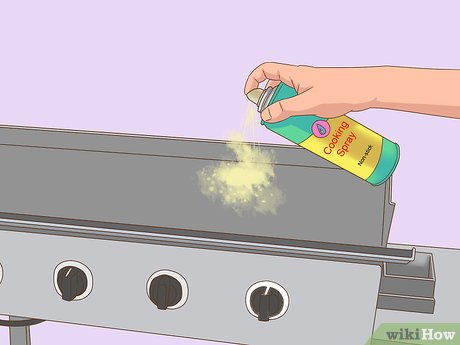When it comes to expired gammon, many people wonder whether it is safe to cook and consume. In this article, we will explore the risks and considerations associated with cooking expired gammon. While the expiration date on the packaging may be confusing, we’ll provide you with the necessary information to make an informed decision about cooking expired gammon.
Key Takeaways:
- Cooking expired gammon can pose health risks due to potential bacterial growth.
- Check the gammon for signs of spoilage and follow proper storage guidelines.
- Consult the packaging for any specific instructions or recommendations.
- Consider alternative meat options if you are unsure about the safety of expired gammon.
- Prioritize food safety and choose fresh, properly stored meat for your meals.
Risks of Cooking Expired Gammon
When it comes to cooking expired gammon, there are several risks to be aware of. Consuming meat that has passed its expiration date can increase the likelihood of foodborne illnesses such as Salmonella, E. coli, and Listeria. Bacteria can rapidly multiply on expired meat, especially if it hasn’t been stored properly. These bacteria can lead to symptoms such as nausea, vomiting, diarrhea, and in severe cases, may even require hospitalization.
Pregnant women, young children, older adults, and individuals with weakened immune systems are particularly vulnerable to the risks associated with consuming expired meat. It is crucial to prioritize food safety and adhere to proper guidelines when handling and cooking any meat product, including gammon.
By understanding and being mindful of the potential risks involved, we can make informed decisions regarding the consumption of expired gammon, taking into consideration the health and well-being of ourselves and our loved ones.
Considerations for Cooking Expired Gammon
When it comes to cooking expired gammon, there are several important considerations to keep in mind to ensure the safe consumption of the meat. While the expiration date on gammon indicates the last date the meat should be sold, it doesn’t necessarily mean it becomes immediately unsafe to eat. However, it’s crucial to assess the gammon for any signs of spoilage before proceeding.
The first step is to check the gammon for any signs of spoilage, such as an off smell, sliminess, or discoloration. If any of these signs are present, it’s best to err on the side of caution and discard the meat. Additionally, it’s important to verify if the gammon has been properly stored in the refrigerator at or below 40°F (4°C). If the meat has spent significant time in the temperature danger zone (40°F-140°F), it’s safer to dispose of it.
It’s also essential to examine the packaging for any specific instructions or recommendations regarding the consumption of expired gammon. Some products may provide additional guidance on whether it’s safe to cook and consume the meat beyond its expiration date. If the gammon passes the sensory tests and has been stored correctly, it can be cooked to kill potential bacteria. Ensure it reaches an internal temperature of at least 145°F (63°C) for proper food safety.
Outlining the Considerations for Cooking Expired Gammon:
- Check for signs of spoilage such as an off smell, sliminess, or discoloration.
- Verify proper storage in the refrigerator at or below 40°F (4°C).
- Examine packaging for specific instructions or recommendations on consuming expired gammon.
- Cook the gammon to an internal temperature of at least 145°F (63°C) to ensure food safety.
Safe Alternatives to Cooking Expired Gammon
If you are unsure about the safety of expired gammon or simply prefer not to take the risk, there are plenty of alternative meat options available to consider. Here are some safe alternatives that you can explore:
- Fresh Gammon: Opt for purchasing fresh gammon from a reputable source that is within its expiration date. This ensures that you are consuming meat that is still fresh and safe to cook.
- Chicken, Beef, or Fish: Consider other types of meat such as chicken, beef, or fish that are within their expiration date or show no signs of spoilage. These meats can provide a delicious and safe alternative to gammon.
- Vegetarian or Plant-Based Options: If you’re open to exploring non-meat alternatives, there are a wide variety of vegetarian or plant-based protein options available. These options can not only be safe to consume but also offer a nutritious and flavorful meal.
- Consult Professionals: If you’re still uncertain about the best alternative to expired gammon, it’s always a good idea to consult with a professional chef, nutritionist, or food safety expert. They can provide personalized advice and recommendations based on your specific dietary needs and preferences.
By considering these safe alternatives, you can ensure that you’re making informed decisions when it comes to your meals. Prioritizing food safety and opting for fresh and properly stored meat will help keep you and your family’s health in check.
| Safe Alternatives | Description |
|---|---|
| Fresh Gammon | Opt for purchasing fresh gammon from a reputable source that is within its expiration date. |
| Chicken, Beef, or Fish | Consider other types of meat such as chicken, beef, or fish that are within their expiration date or show no signs of spoilage. |
| Vegetarian or Plant-Based Options | Explore non-meat alternatives such as vegetarian or plant-based protein options for a safe and nutritious meal. |
| Consult Professionals | If unsure, seek advice from a professional chef, nutritionist, or food safety expert for personalized recommendations. |
Conclusion and Final Thoughts
Cooking expired gammon can present potential risks to your health and wellbeing. It is crucial to prioritize food safety and make informed decisions when considering the consumption of expired meat.
Assessing the gammon for signs of spoilage such as a foul smell, sliminess, or discoloration is essential. If any of these indicators are present, it is safest to discard the meat to avoid the risk of foodborne illnesses.
Proper storage and following any specific instructions or recommendations on the packaging can also play a significant role in minimizing risks. However, when uncertainty arises, it is always best to err on the side of caution and choose fresh, properly stored meat for your meals.
Ultimately, by prioritizing food safety and considering alternative meat options, you can ensure the well-being of yourself and your loved ones. If you have any doubts or concerns, consulting a professional chef, nutritionist, or food safety expert can provide personalized advice and recommendations tailored to your specific needs and circumstances.
FAQ
Can I cook expired gammon?
Cooking expired gammon can be risky due to potential bacterial growth and the associated risks of foodborne illnesses. It is important to assess the gammon for any signs of spoilage, follow proper storage guidelines, and check for any specific instructions on the packaging.
What are the risks of cooking expired gammon?
Consuming gammon that has passed its expiration date can increase the risk of foodborne illnesses such as Salmonella, E. coli, and Listeria. Bacteria can multiply rapidly on meat that has expired, especially if it has not been stored correctly. These bacteria can cause symptoms such as nausea, vomiting, diarrhea, and in severe cases, hospitalization. Pregnant women, young children, older adults, and individuals with weakened immune systems are particularly vulnerable to these risks.
What are the considerations for cooking expired gammon?
Before deciding to cook expired gammon, consider the following factors:
– Check the gammon for any signs of spoilage, such as an off smell, sliminess, or discoloration. If any of these signs are present, it is best to discard the meat.
– Verify if the gammon has been properly stored in the refrigerator at or below 40°F (4°C). If it has spent significant time in the temperature danger zone (40°F-140°F), it is safer to discard it.
– Examine the packaging for any specific instructions or recommendations regarding the consumption of expired gammon.
– If the gammon passes the sensory tests and has been stored correctly, it can be cooked to kill potential bacteria. Ensure it reaches an internal temperature of at least 145°F (63°C) for proper food safety.
What are the safe alternatives to cooking expired gammon?
If you are unsure about the safety of expired gammon or prefer not to take the risk, there are alternative meat options to consider:
– Purchase fresh gammon from a reputable source within its expiration date.
– Opt for other types of meat such as chicken, beef, or fish that are within their expiration date or show no signs of spoilage.
– Explore vegetarian or plant-based protein options for a safe and nutritious meal.
– Consult a professional chef, nutritionist, or food safety expert for personalized advice and recommendations.
What are the conclusion and final thoughts regarding cooking expired gammon?
Cooking expired gammon can be risky due to potential bacterial growth and the associated risks of foodborne illnesses. It is important to prioritize food safety and consider alternative meat options to ensure the well-being of you and your family. When in doubt, it is best to err on the side of caution and choose fresh, properly stored meat for your meals.




